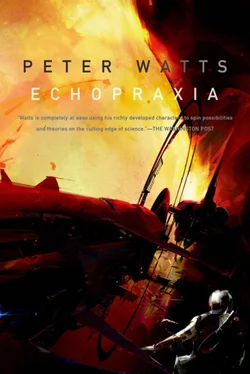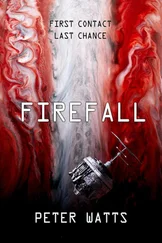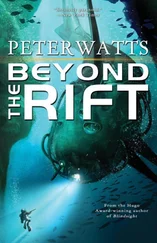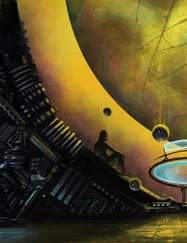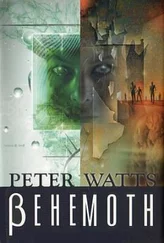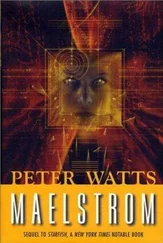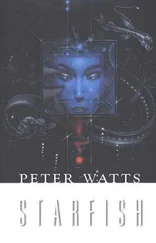Anonymous, “Digital Physics,” Wikipedia, the Free Encyclopedia , September 17, 2013, http://en.wikipedia.org/w/index.php?title=Digital_physics&oldid=571364996.
Nick Bostrom, “Are We Living in a Computer Simulation?,” The Philosophical Quarterly 53, no. 211 (2003): 243–255, doi:10.1111/1467-9213.00309.
Nick Bostrom, “The Simulation Argument,” n.d., http://www.simulation-argument.com/.
Brian Whitworth, The Physical World as a Virtual Reality , arXiv e-print, January 2, 2008, http://arxiv.org/abs/0801.0337.
Max Tegmark, The Mathematical Universe , arXiv e-print, April 5, 2007, http://arxiv.org/abs/0704.0646.
Amanda Gefter, “Reality: Is Everything Made of Numbers?,” New Scientist 215, no. 2884 (September 29, 2012): 38–39, doi:10.1016/S02624079(12)62518-4.
Zeeya Merali, “Theoretical Physics: The Origins of Space and Time,” Nature 500, no. 7464 (August 28, 2013): 516–519, doi:10.1038/500516a.
Marcus Chown, “Our World May Be a Giant Hologram,” New Scientist no. 2691 (2009): 24–27.
Dave Mosher, “World’s Most Precise Clocks Could Reveal Universe Is a Hologram - Wired Science,” Wired Science , October 28, 2010, http://www.wired.com/wiredscience/2010/10/holometer-universe-resolution/.
“Rebooting the Cosmos: Is the Universe the Ultimate Computer? [Replay]: Scientific American,” accessed September 10, 2013, http://www.scientificamerican.com/article.cfm?id=world-science-festival-rebooting-the-cosmos-is-the-universe-ultimate-computer-live-event.
B. Greene, The Hidden Reality: Parallel Universes and the Deep Laws of the Cosmos (New York: Vintage Books, 2011).
Lee Smolin, The Life of the Cosmos (New York: Oxford University Press, 1997).
Lee Smolin, “Time Reborn,” 2012, http://perimeterinstitute.ca/videos/time-reborn.
Lee Smolin, Time Reborn: From the Crisis in Physics to the Future of the Universe (Boston: Houghton Mifflin Harcourt, 2013).
“DNA Barcoding,” Wikipedia, the Free Encyclopedia , September 17, 2013, http://en.wikipedia.org/w/index.php?title=DNA_barcoding&oldid=573251556.
Kevin Davies, “A QuantuMDx Leap for Handheld DNA Sequencing - Bio-IT World,” Bio-IT World , 2012, http://www.bio-itworld.com/2012/01/17/quantumdx-leap-handheld-dna-sequencing.html.
“Vortex Engine,” Wikipedia, the Free Encyclopedia , September 18, 2013, http://en.wikipedia.org/w/index.php?title=Vortex_engine&oldid=573492083.
Tyler Hamilton, “Taming Tornadoes to Power Cities.,” The Toronto Star , July 21, 2007, http://www.thestar.com/business/2007/07/21/taming_tornadoes_to_power_cities.html.
Kurt Kleiner, “Artificial Tornado Plan to Generate Electricity,” Technology: New Scientist Blogs , 2008, http://www.newscientist.com/blog/technology/2008/06/artificial-tornado-plan-to-generate.html.
Kazuhisa Shibata et al., “Perceptual Learning Incepted by Decoded fMRI Neurofeedback Without Stimulus Presentation,” Science 334, no. 6061 (December 9, 2011): 1413–1415, doi:10.1126/science.1212003.
Jack L. Gallant et al., “Identifying Natural Images from Human Brain Activity,” Nature 452, no. 7185 (March 20, 2008): 352+.
T. Horikawa et al., “Neural Decoding of Visual Imagery During Sleep,” Science 340, no. 6132 (May 3, 2013): 639–642, doi:10.1126/science.1234330.
Kendrick N. Kay and Jack L. Gallant, “I Can See What You See,” Nature Neuroscience 12, no. 3 (March 2009): 245–245, doi:10.1038/nn0309-245.
Thomas Naselaris et al., “Bayesian Reconstruction of Natural Images from Human Brain Activity,” Neuron 63, no. 6 (September 24, 2009): 902–915, doi:10.1016/j.neuron.2009.09.006.
Jon Stokes, “Sony Patents a Brain Manipulation Technology,” Ars Technica , April 7, 2005, http://arstechnica.com/uncategorized/2005/04/4785-2/.
Johannes Gräff and Li-Huei Tsai, “Cognitive Enhancement: A Molecular Memory Booster,” Nature 469, no. 7331 (January 27, 2011): 474–475, doi:10.1038/469474a.
Dillon Y. Chen et al., “A Critical Role for IGF-II in Memory Consolidation and Enhancement,” Nature 469, no. 7331 (January 27, 2011): 491–497, doi:10.1038/nature09667.
Reut Shema et al., “Enhancement of Consolidated Long-Term Memory by Overexpression of Protein Kinase Mζ in the Neocortex,” Science 331, no. 6021 (March 4, 2011): 1207–1210, doi:10.1126/science.1200215.
Brendan Maher, “Poll Results: Look Who’s Doping,” Nature News 452, no. 7188 (April 9, 2008): 674–675, doi:10.1038/452674a.
Eric T. Lofgren and Nina H Fefferman, “The Untapped Potential of Virtual Game Worlds to Shed Light on Real World Epidemics,” The Lancet Infectious Diseases 7, no. 9 (September 2007): 625–629, doi:10.1016/S1473-3099(07)70212-8.
“Corrupted Blood Incident,” Wikipedia, the Free Encyclopedia , August 12, 2013, http://en.wikipedia.org/w/index.php?title=Corrupted_Blood_incident&oldid=566358819.
John Gaudiosi, “Gameworld:Virtual Economies in Video Games Used as Case Studies,” Reuters , October 1, 2009, http://www.reuters.com/article/2009/10/01/videogames-economies-idUSSP15565220091001.
Alexandre Alié and Michaël Manuel, “The Backbone of the Post-synaptic Density Originated in a Unicellular Ancestor of Choanoflagellates and Metazoans,” BMC Evolutionary Biology 10, no. 1 (2010): 34, doi:10.1186/1471-2148-10-34.
P. Burkhardt et al., “Primordial Neurosecretory Apparatus Identified in the Choanoflagellate Monosiga Brevicollis,” Proceedings of the National Academy of Sciences 108, no. 37 (August 29, 2011): 15264–15269, doi:10.1073/pnas.1106189108.
X. Cai, “Unicellular Ca2+ Signaling ‘Toolkit’ at the Origin of Metazoa,” Molecular Biology and Evolution 25, no. 7 (April 3, 2008): 1357–1361, doi:10.1093/molbev/msn077.
B. J. Liebeskind, D. M. Hillis, and H. H. Zakon, “Evolution of Sodium Channels Predates the Origin of Nervous Systems in Animals,” Proceedings of the National Academy of Sciences 108, no. 22 (May 16, 2011): 9154–9159, doi:10.1073/pnas.1106363108.
Pierre-Yves Plaçais and Thomas Preat, “To Favor Survival Under Food Shortage, the Brain Disables Costly Memory,” Science 339, no. 6118 (January 25, 2013): 440–442, doi:10.1126/science.1226018.
Margaret Talbot, “Brain Gain,” The New Yorker , April 27, 2009, http://www.newyorker.com/reporting/2009/04/27/090427fa_fact_talbot.
Читать дальше
